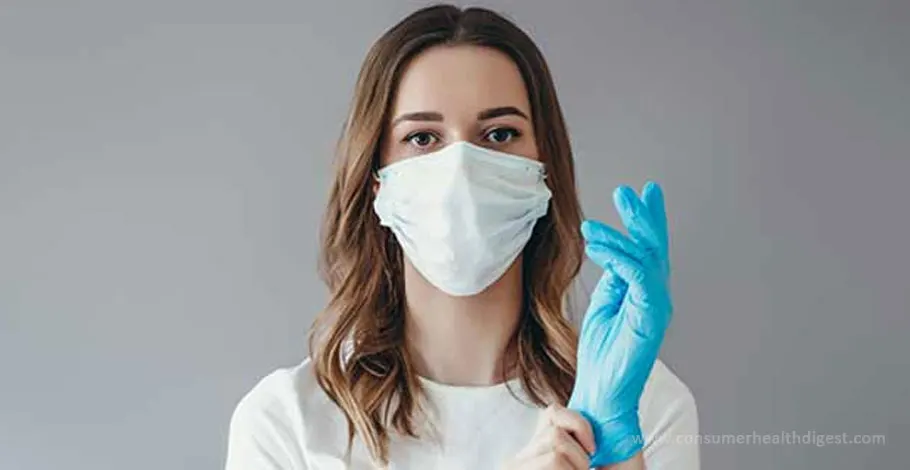In This Article
Overview
The best way to protect yourself from COVID-19 is, as usual, to stay indoors and wear a mask. As an additional precaution, whether to do shopping, running, or doing business, it is recommended to wear disposable gloves outdoors.

The gloves can protect against microorganisms that can be on any surface that you are going to touch. Official data suggests that the disease's usual transmission occurs via respiratory droplets. However, the new research shows that the most common transmission method for COVID-19 involves virus-infected surfaces.
To reduce infection risk, we recommend using gloves when handling food or communicating with others. Additionally, wearing gloves and being vaccinated will give you the best defense against COVID disease.[1]
Remember that gloves contaminate anything you touch. While wearing gloves, make sure you clean your phone, wallet, doorknobs, and any other items that you may be in direct contact with.
Disposable gloves are currently available in the following materials:
Currently, disposable gloves for covid 19 are available in many different materials: latex, nitrile, vinyl, and polyethylene.
Gloves Made Of Latex
Latex material has exceptional quality that is water-resistant, flexible, scratch-resistant, very durable, and elastic. Easy stretchable, providing reliable skin contact. Last but not least, it has a higher tactile sensitivity than any other material on the market.
Be careful because latex may not endure some oils or acids. Visit Medrux gloves official website to find out all latex gloves characteristics from this top gloves manufacturer.
Latex gloves are used primarily for medical procedures, invasive cosmetology procedures, tattooing, and piercings. They can also be used for other purposes. Latex is also popular in the food processing sector.
Gloves Made Of Nitrile
Nitrile gloves are made from synthetic rubber, which makes them an excellent choice for those who are allergic or sensitive to latex.[2] Nitrile is more robust than latex and more resistant to harsh chemicals and reagents.
Nitrile gloves are an excellent choice because they are both comfortable and resistant to punctures. They can also be extended enough to wrap around the wrists, providing complete coverage.
Gloves Made From Pvc (Polyvinyl Chloride)
PVC gloves should be used if rubber or latex gloves become too tight. They are lightweight and highly durable as they are made out of very thin plastic. PVC gloves are made out of non-toxic material that can be used in food preparation. Because they aren't stretchy, it is easy to put on and take off gloves. They do not protect against germs or infections.[3] They should not be used in jobs that pose a high risk of skin damage.
Gloves Made From Plastic.
These gloves do not stretch much because they are latex-free, better fit the hands, and do not shackle your movements. These gloves are waterproof so that you can use them for many tasks, including food preparation, hair coloring, pet washing, disinfecting indoor spaces, and home disinfection.
How To Properly Remove Gloves?
Pull the gloves up around your wrist, and then turn them inside-out to remove them. It would be best if you evaded touching the outer surface of used gloves with your bare hands.
1 Source
We review published medical research in respected scientific journals to arrive at our conclusions about a product or health topic. This ensures the highest standard of scientific accuracy.
[2] Gloves Made Of Nitrile : https://www.researchgate.net/publication/246017283_Research_SummaryComparison_of_nitrile_and_latex_examination_gloves
[3] Gloves Made From Pvc : https://pubmed.ncbi.nlm.nih.gov/10511487/







 This article changed my life!
This article changed my life! This article was informative.
This article was informative. I have a medical question.
I have a medical question.
 This article contains incorrect information.
This article contains incorrect information. This article doesn’t have the information I’m looking for.
This article doesn’t have the information I’m looking for.